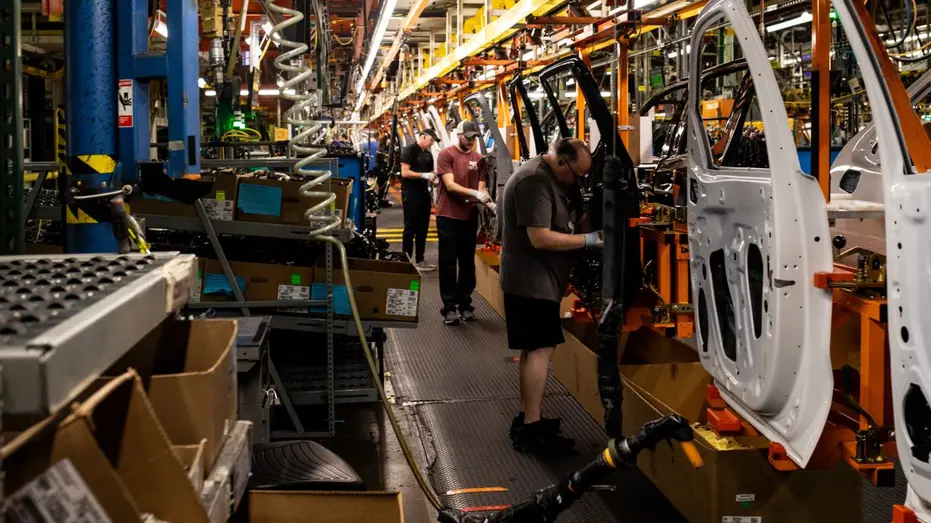
Wafricnews - June 5, 2025
Job creation in the United States private sector took a sharp downturn in May, with just 37,000 positions added — the lowest figure in over two years — as growing economic uncertainty weighs heavily on employer confidence.
According to data released Wednesday by payroll firm ADP, May’s numbers reflect the second consecutive month of slowing job growth. The figure fell well below economist forecasts of 130,000 and marked a significant decline from the 60,000 jobs reported in April.
“This isn’t a sign of collapse, but it is clear evidence of hiring hesitation,” said ADP Chief Economist Nela Richardson during a media briefing.
Hiring Freeze Hits Goods Sector, Small Firms
The slowdown was particularly evident in the goods-producing sector, which lost 2,000 jobs — a signal of broader concerns in manufacturing and construction. Small businesses, often considered the backbone of the U.S. economy, were hit hardest. Companies with fewer than 50 employees shed 13,000 jobs.
“As goes small business, so goes the economy,” Richardson noted, adding that ADP is closely monitoring this trend. “It’s like driving through fog,” she said. “You don’t stop, but you do slow down — and that’s exactly what businesses are doing with hiring.”
Markets responded quickly. U.S. stock futures dipped following the data release, with Dow futures down by 40 points and minor drops seen in both the S&P 500 and Nasdaq 100. All major indexes regained ground shortly after the market opened.
Tariffs and Policy Turbulence Fuel Business Uncertainty
Analysts suggest that much of the hesitation stems from the volatile policy environment under President Donald Trump. Businesses, especially small and mid-sized firms, are grappling with the unpredictability of sudden tariff shifts and unclear long-term costs.
Separate data from the Federal Reserve Bank of New York on Wednesday underscored that smaller firms in regions like New York and New Jersey, particularly those exposed to Trump’s import tariffs, have suffered financial setbacks. Many are passing higher costs onto consumers while simultaneously cutting back on staff.
Slowdown in Job Creation Raises Concerns About U.S. Labor Market
Slowdown in Job Creation Raises Concerns About U.S. Labor Market
Wages Hold Steady Despite Job Losses
Despite the slowdown in hiring, wages continued to rise — a sign of resilience within the labor market. ADP reported a 4.5% pay increase for workers who stayed in their roles and a 7% bump for job switchers.
This wage stability is one of the reasons economists believe the labor market, while cooling, is not deteriorating. “Wages are strong but not inflationary. Hiring is slow, but we’re not seeing mass layoffs,” Richardson said. “There’s no clear signal pulling the market strongly in either direction.”
Trump Pushes Fed for Rate Cuts
Following the ADP release, Trump took to his Truth Social platform to renew pressure on Federal Reserve Chair Jerome Powell, calling for urgent interest rate cuts. “ADP NUMBER OUT!!! 'Too Late' Powell must now LOWER THE RATE,” Trump wrote. “He is unbelievable!!! Europe has lowered NINE TIMES!”
In fact, the European Central Bank has trimmed rates seven times over the past year — a point of comparison Trump continues to highlight as the Fed maintains a cautious stance in light of uncertain economic indicators.
The Federal Reserve’s most recent policy statement flagged heightened risks of both rising unemployment and inflation, leaving the central bank in a holding pattern as it waits for more clarity on how the U.S. economy is responding to Trump’s trade and fiscal policies.
Eyes on Friday’s Official Job Report
While ADP’s figures provide a glimpse into employment trends, they don’t always align perfectly with the U.S. government’s official labor statistics. All eyes now turn to Friday’s report from the Department of Labor, which is expected to confirm the slowdown — projecting job growth of 130,000 in May, down from 177,000 in April.
With political pressures mounting and businesses holding back, the coming weeks could prove pivotal for policymakers trying to balance growth, inflation, and stability.
By WafricNews Desk
By WafricNews Desk


Comment
To post a comment, you have to login first
LoginNo Comments Yet...